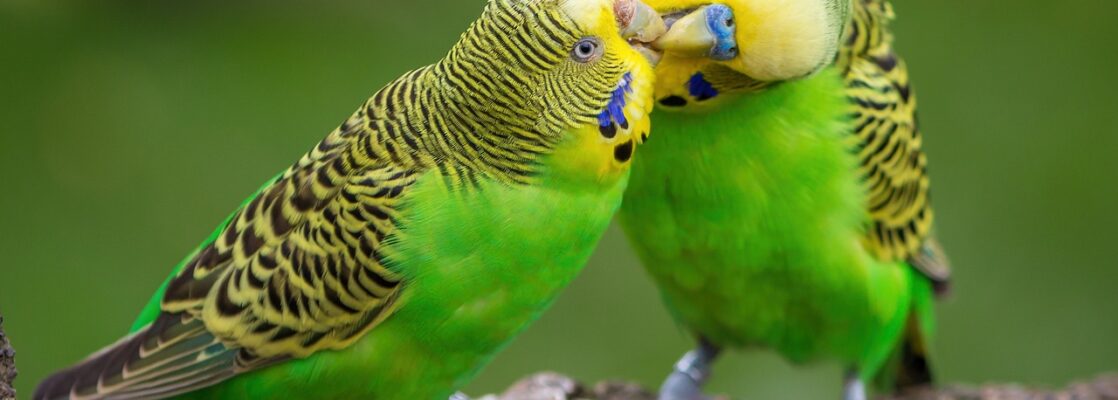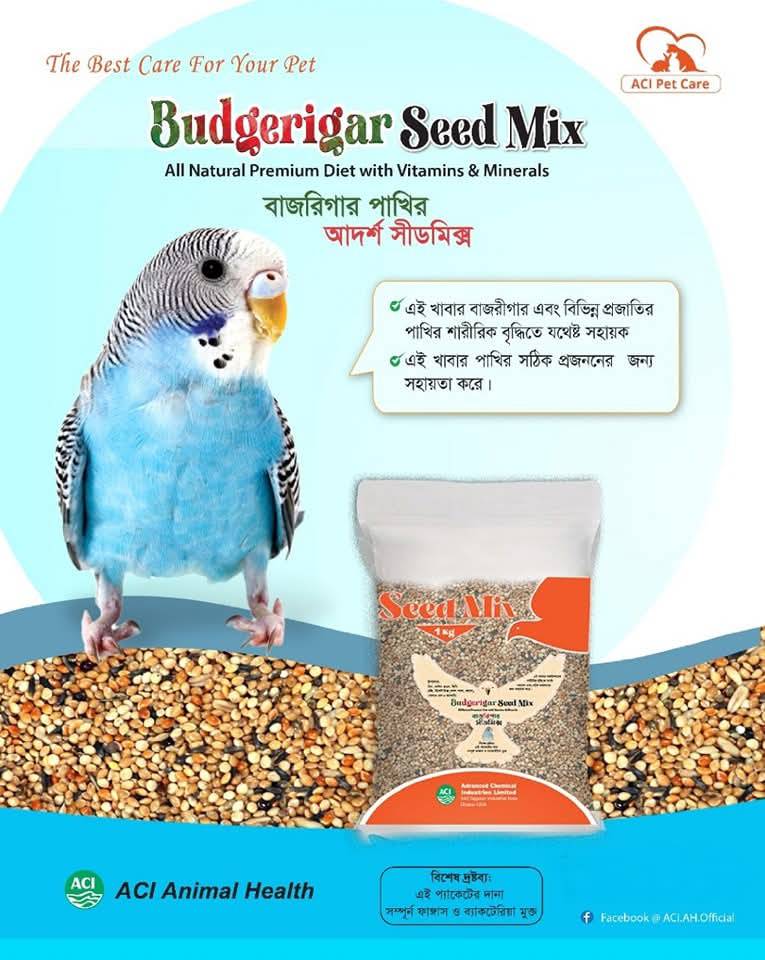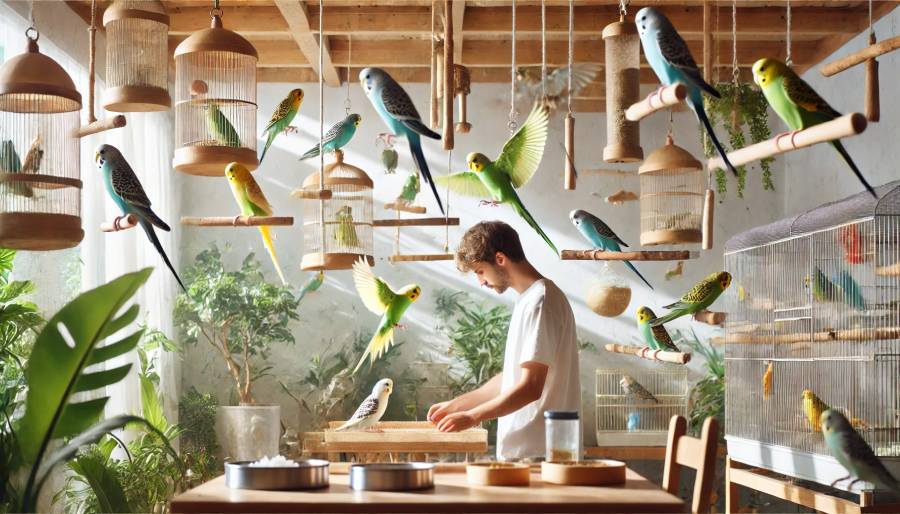
Proper care, a balanced diet, and a suitable environment are essential for keeping budgerigars at home. Taking the right care ensures their health, happiness, and longevity. Below is a step-by-step guide to caring for budgerigars:
1. Cage Management
Cage Size: Choose a spacious cage where the bird can fly. A 20x20x24 inch cage is sufficient for a pair of budgerigars.
Perches: Provide wooden perches of different sizes to keep their leg muscles strong.
Cleanliness:
- Change the newspaper or tray at the bottom of the cage daily.
- Clean the cage thoroughly at least once a week.
Light & Air: Place the cage in a well-lit, airy location, but avoid direct sunlight or cold drafts.
2. Budgerigar’s Diet
Main Food: A seed mix is the best choice for budgerigars. You can feed them sunflower seeds, mixed budgie feed, or processed feed like ACI Pet Care’s budgie seed mix.
Fruits & Vegetables: Apples, carrots, spinach, and broccoli can be included in their diet. However, avoid avocado, onion, garlic, and chocolate as they are toxic.
Calcium: Provide cuttlebone or calcium blocks to meet their calcium needs, especially for egg-laying birds.

Avoid Toxic Foods: Avoid avocado, chocolate, onion, garlic, and excessively salty foods.
Fresh Water:
- Provide fresh water daily.
- Clean the water dish every day.
3. Environment & Hygiene
Cage Placement: Keep the cage in a location with good ventilation and light, but away from direct sunlight or cold air.
Cleanliness: Clean the bottom of the cage daily and do a thorough cleaning once a week.
Play Items: Budgerigars enjoy playing. Provide toys like swings, mirrors, and bells.
Resting Area: Cover the cage at night to give them a peaceful rest.
4. Mental & Physical Activity
Toys & Fun Items:
- Keep mirrors, swings, and colorful toys in the cage.
- Choose toys that are easy for them to hold and chew.
Flying Opportunities: - Allow them to fly outside the cage daily if possible.
- Ensure the room is safe (no hazards) and close the windows.
5. Breeding Process
Selecting a Pair: Keep a male and a female budgie together for breeding.
Breeding Box: Provide a breeding box (wooden or clay) inside the cage.
Egg Care: The female will incubate the eggs, and chicks will hatch within 18-21 days. Avoid disturbing them during this time.
6. Health Checkups & Care
Health Signs:
- If the bird refuses to eat, loses feathers, or seems unusually quiet, consult a vet immediately.
Regular Bathing: - Provide a shallow dish with lukewarm water for the bird to bathe voluntarily.
- Allow bathing 2-3 times a week.
Feather Care: - Budgies groom their feathers naturally.
- Keep a small brush or toy in the cage for their enjoyment.
7. Companionship & Training
- Budgies are social birds; do not keep them alone.
- Spend some time with them daily.
- Train them patiently by offering food from your hand.
8. Socialization & Training
- Budgies enjoy human interaction.
- Spend time with them daily and train them with patience.
With proper care, budgerigars can live a long, healthy life and bring you joy.


